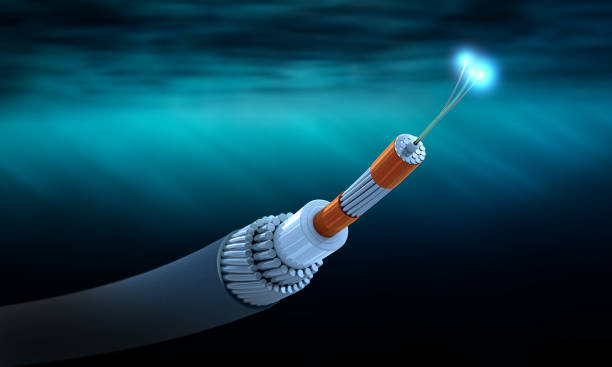Power cable monitoring solutions
Submarine power cables and substation equipment.
Submarine power cables and substation equipment are key components of marine energy development and underwater power transmission. However, the extreme conditions and complexity of the underwater environment can have adverse effects on the temperature of the cables and equipment, leading to overheating, aging, and even faults. To ensure the safe operation of underwater power systems, distributed fiber optic temperature sensing technology is applied for temperature monitoring of submarine power cables and substation equipment.

Submarine power cables:
Fiber deployment: Deploy distributed fiber optic sensors at critical locations of the submarine power cables. The fiber optic sensors are in close contact with the cables, enabling real-time monitoring of temperature changes on the cable surface or in the surrounding environment.

Real-time monitoring: Utilize distributed fiber optic temperature sensing technology to monitor the temperature changes of submarine power cables in real-time. Abnormal temperature variations may indicate issues such as overheating, excessive loads, or potential faults in the cables.
Distance localization: By utilizing the deployment locations of the fiber optic sensors and temperature data, the precise location of temperature anomalies can be accurately determined, allowing for pinpointing of specific areas where cable issues may arise. This helps in promptly identifying and addressing potential problems.
Substation equipment

Fiber deployment: Install distributed fiber optic sensors on critical equipment within the underwater substation, such as transformers and switchgear. The fiber optic sensors are in contact with the surfaces or surrounding environments of the equipment to acquire real-time temperature information.
Real-time monitoring: Utilize distributed fiber optic temperature sensing technology to monitor the temperature changes of the substation equipment in real-time. Abnormal temperature variations may indicate issues such as overheating, excessive loads, or other equipment malfunctions.
Fault diagnosis and localization: By analyzing the temperature data captured by the fiber optic sensors and combining it with the equipment monitoring system, fault diagnosis and localization can be performed. Based on the location and trend of temperature anomalies, the specific location of equipment faults can be accurately determined. Maintenance teams can promptly take appropriate repair measures, such as repairing or replacing the faulty equipment.
Distributed fiber optic temperature sensing technology provides real-time temperature monitoring and fault localization capabilities for submarine power cables and substation equipment. By timely detecting temperature anomalies and locating faults, appropriate maintenance and repair measures can be taken to ensure the safe operation and reliability of underwater power systems. The technology also features waterproof and corrosion-resistant properties, making it suitable for the demanding underwater environment.





